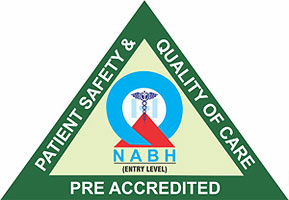+91-7291089674 (Bandra)
+91-7291092120 (Kandivali)





May 6, 2019 | Author: Admin
Like a camera, the eye sees when light enters it. Inside your eye is a natural clear lens, much like the lens of a camera. It focuses the light rays coming through the pupil onto the retina at the back of the eye. The different parts of the retina collect this light and send a message to your brain, enabling you to see.
For perfect vision the lens should be clear so that light can pass through it. Light enters through the cornea, passes through your natural lens and is focused onto your retina, resulting in clear vision
When the lens becomes cloudy or opaque, light cannot pass through it. Cataract scatters the light rays passing through the eye, thus resulting in blurred vision. A cataract is a condition when the natural lens inside your eyes gets cloudy. Compared to vision with a clear lens, your vision with a cataract may look fuzzy, colors might be muted, and you may experience difficulty in reading signs while driving at night. The symptoms of cataracts are progressive and cannot be corrected with glasses or contacts. When symptoms become bothersome or limit your daily activities, it’s time to consider treatment.
The most common cause of cataract is degenerative changes due to the ageing process. With age, proteins in the natural lens degenerate, resulting in a clouded lens called a cataract. There might be other causes such as:
If you have cataract, you may experience some or all of the following symptoms.
In cataract surgery your natural clouded lens will be replaced by an artificial intraocular lens (IOL). This lens helps the incoming light rays to focus properly on your retina, thus enabling you to see clearly. Your new lens should be able to restore vision to nearly what it was earlier, though you may need to wear glasses for reading or driving.
The lens options include MONOFOCAL lenses – corrects distance vision, and bifocal lens – corrects distance and near vision and trifocal lens corrects distance, intermediate and near vision. In some cases when the shape of the eye is not circular resulting in distorted vision – a condition called as astigmatism, an option of customized “toricmonofocal lenses” or “toric multifocal lenses” can be used.
OJas offers various advanced, cutting edge surgical techniques to treat cataract. Based on the type of cataract you have, your health condition and your lifestyle, the Ophthalmologist will recommend the best suitable option for you. The three commonly used surgical techniques are:-
This is also a new technique where the cataract is removed manually through a slightly larger incision. This technique is used if your cataract is excessively hard, making phacoemulsification difficult.This is rarely used
Usually no stitches are required to close the incision. This minimally invasive surgery allows faster and safer healing, and you can return to your normal activities in no time.
Phacoemulsification is carried out through an extremely small incision sized 1.8 mm. The primary advantage is extremely reliable and predictable outcomes with fast healing.